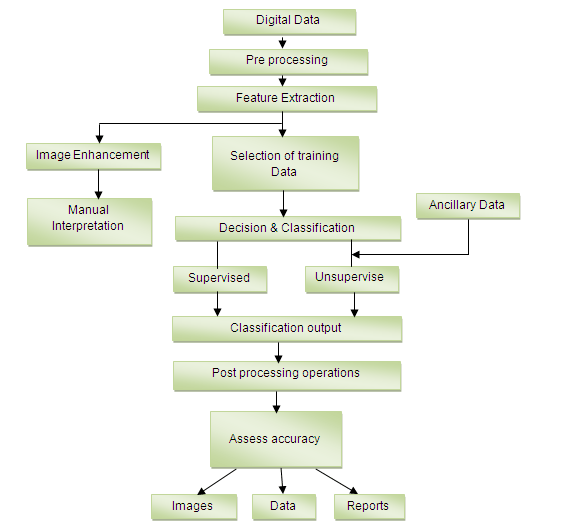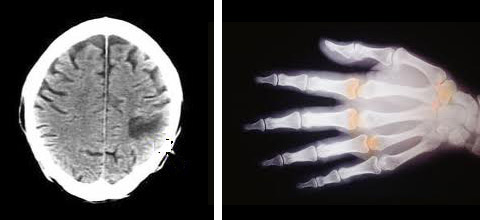What is Image Processing?
Image processing is a method to convert an image into digital form and perform some operations on it, in order to get an enhanced image or to extract some useful information from it. It is a type of signal dispensation in which input is image, like video frame or photograph and output may be image or characteristics associated with that image. Usually Image Processing system includes treating images as two dimensional signals while applying already set signal processing methods to them.
It is among rapidly growing technologies today, with its applications in various aspects of a business. Image Processing forms core research area within engineering and computer science disciplines too.
Image processing basically includes the following three steps.
· Importing the image with optical scanner or by digital photography.
· Analyzing and manipulating the image which includes data compression and image enhancement and spotting patterns that are not to human eyes like satellite photographs.
· Output is the last stage in which result can be altered image or report that is based on image analysis.
Purpose of Image processing
The purpose of image processing is divided into 5 groups. They are:
1. Visualization – Observe the objects that are not visible.
2. Image sharpening and restoration – To create a better image.
3. Image retrieval – Seek for the image of interest.
4. Measurement of pattern – Measures various objects in an image.
5. Image Recognition – Distinguish the objects in an image.
Types
The two types of methods used for Image Processing are Analog and Digital Image Processing. Analog or visual techniques of image processing can be used for the hard copies like printouts and photographs. Image analysts use various fundamentals of interpretation while using these visual techniques. The image processing is not just confined to area that has to be studied but on knowledge of analyst. Association is another important tool in image processing through visual techniques. So analysts apply a combination of personal knowledge and collateral data to image processing.
Digital Processing techniques help in manipulation of the digital images by using computers. As raw data from imaging sensors from satellite platform contains deficiencies. To get over such flaws and to get originality of information, it has to undergo various phases of processing. The three general phases that all types of data have to undergo while using digital technique are Pre- processing, enhancement and display, information extraction.

Fig. 1: Flow Chart Showing Diffrent Phases in Digital Image Processing
Applications
1. Intelligent Transportation Systems – This technique can be used in Automatic number plate recognition and Traffic sign recognition.
2. Remote Sensing – For this application, sensors capture the pictures of the earth’s surface in remote sensing satellites or multi – spectral scanner which is mounted on an aircraft. These pictures are processed by transmitting it to the Earth station. Techniques used to interpret the objects and regions are used in flood control, city planning, resource mobilization, agricultural production monitoring, etc.
3. Moving object tracking – This application enables to measure motion parameters and acquire visual record of the moving object. The different types of approach to track an object are:
· Motion based tracking
· Recognition based tracking
4. Defense surveillance – Aerial surveillance methods are used to continuously keep an eye on the land and oceans. This application is also used to locate the types and formation of naval vessels of the ocean surface. The important duty is to divide the various objects present in the water body part of the image. The different parameters such as length, breadth, area, perimeter, compactness are set up to classify each of divided objects. It is important to recognize the distribution of these objects in different directions that are east, west, north, south, northeast, northwest, southeast and south west to explain all possible formations of the vessels. We can interpret the entire oceanic scenario from the spatial distribution of these objects.
5. Biomedical Imaging techniques – For medical diagnosis, different types of imaging tools such as X- ray, Ultrasound, computer aided tomography (CT) etc are used. The diagrams of X- ray, MRI, and computer aided tomography (CT) are given below.

Fig. 2: Representational Image Of X- ray, MRI, And Computer Aided Tomography (CT)
Some of the applications of Biomedical imaging applications are as follows:
· Heart disease identification– The important diagnostic features such as size of the heart and its shape are required to know in order to classify the heart diseases. To improve the diagnosis of heart diseases, image analysis techniques are employed to radiographic images.
· Lung disease identification – In X- rays, the regions that appear dark contain air while region that appears lighter are solid tissues. Bones are more radio opaque than tissues. The ribs, the heart, thoracic spine, and the diaphragm that separates the chest cavity from the abdominal cavity are clearly seen on the X-ray film.
· Digital mammograms – This is used to detect the breast tumour. Mammograms can be analyzed using Image processing techniques such as segmentation, shape analysis, contrast enhancement, feature extraction, etc.
6. Automatic Visual Inspection System – This application improves the quality and productivity of the product in the industries.
· Automatic inspection of incandescent lamp filaments – This involves examination of the bulb manufacturing process. Due to no uniformity in the pitch of the wiring in the lamp, the filament of the bulb gets fused within a short duration. In this application, a binary image slice of the filament is created from which the silhouette of the filament is fabricated. Silhouettes are analyzed to recognize the non uniformity in the pitch of the wiring in the lamp. This system is being used by the General Electric Corporation.
· Automatic surface inspection systems – In metal industries it is essential to detect the flaws on the surfaces. For instance, it is essential to detect any kind of aberration on the rolled metal surface in the hot or cold rolling mills in a steel plant. Image processing techniques such as texture identification, edge detection, fractal analysis etc are used for the detection.
· Faulty component identification – This application identifies the faulty components in electronic or electromechanical systems. Higher amount of thermal energy is generated by these faulty components. The Infra-red images are produced from the distribution of thermal energies in the assembly. The faulty components can be identified by analyzing the Infra-red images.
Research & future
Current Research
A wide research is being done in the Image processing technique.
1. Cancer Imaging – Different tools such as PET, MRI, and Computer aided Detection helps to diagnose and be aware of the tumour.
2. Brain Imaging – Focuses on the normal and abnormal development of brain, brain ageing and common disease states.
3. Image processing – This research incorporates structural and functional MRI in neurology, analysis of bone shape and structure, development of functional imaging tools in oncology, and PET image processing software development.
4. Imaging Technology – Development in image technology have formed the requirement to establish whether new technologies are effective and cost beneficial. This technology works under the following areas:
· Magnetic resonance imaging of the knee
· Computer aided detection in mammography
· Endoscopic ultrasound in staging the oesophageal cancer
· Magnetic resonance imaging in low back pain
· Ophthalmic Imaging – This works under two categories:
5. Development of automated software- Analyzes the retinal images to show early sign of diabetic retinopathy
6. Development of instrumentation – Concentrates on development of scanning laser ophthalmoscope
Future
We all are in midst of revolution ignited by fast development in computer technology and imaging. Against common belief, computers are not able to match humans in calculation related to image processing and analysis. But with increasing sophistication and power of the modern computing, computation will go beyond conventional, Von Neumann sequential architecture and would contemplate the optical execution too. Parallel and distributed computing paradigms are anticipated to improve responses for the image processing results.

 Cart is empty
Cart is empty ![15267 [Converted]-01](https://sms-comp.com/wp-content/uploads/2018/10/15267-Converted-01-1700x956.png)
Keep working, remarkable job!